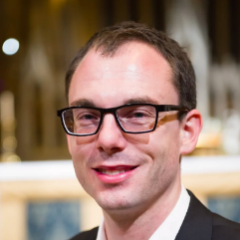The title of the latest Sydney Symphony Orchestra concert was simply “Organ Symphony”, referring to the work which was to form the second half of the evening’s concert – Saint-Saëns’ “Organ Symphony” in C minor. The concert hall of Sydney Opera House is blessed with a large, visually stunning pipe organ in the auditorium, and no doubt the title of the concert referred to the fact that many of those present had come along particularly to hear something sonically spectacular at the end of the concert. However, there was plenty to look forward to even before the evening’s grand finale.
To conduct, the Sydney Symphony welcomed a guest maestro, the Swiss-born conductor Charles Dutoit, who cut an imperious presence on stage, and indeed it was with a commanding manner that he proceeded to conduct the evening’s program. He was never ostentatious, but simply efficient and economical, providing the orchestra with exactly what they needed, imprinting on the music his innate sense of phrasing and musicality. The first work of the concert was Mozart’s Symphony no. 29 in A major, which was characterised particularly by a warm string tone, which suited the music perfectly. Every phrase was shaped gracefully and with great care. Under Dutoit’s direction, the work was not taken at a hurried tempo, but instead was poised, with every phrase allowed time to speak. The orchestra played all evening with an enviable sense of ensemble. Indeed, one of Dutoit’s trademarks seemed to be his ability to communicate a sense of rhythm to the players, who through his direction had a crystal-clear indication of the tempo, knowing exactly where to play, with the effect that their playing had a great confidence and clarity to it.
In an acknowledgement to Dutoit’s Swiss heritage, the second work in the program was Frank Martin’s Concerto for seven wind instruments, timpani, percussion and strings. In fact, the connection between Martin and Dutoit goes further. Martin’s concerto was commissioned by the Bern Symphony Orchestra, an orchestra of which Dutoit was principal conductor for over ten years. As in some previous concerts, it was pleasing to see the solo parts taken by members of the Sydney Symphony, who were able to showcase their considerable talent. Frank Martin is a composer who deserves to be better known. In a relatively short concerto, lasting about 20 minutes, Martin manages to exhibit a variety of styles and moods, from the sombre, elegant melodies of the second movement to the lively, almost violent motifs of the final movement. Once again, the orchestra played with complete control with all the soloists shining in an impressive show of virtuosity.
And so to the second half and the main work in the program, Saint-Saëns’ “Organ Symphony”. Although the organ gives the work its subtitle, the role of the organ is fairly minor, although it is rather noticeable, especially in the final movement. In fact, for much of the work the organ is silent, playing only in the slow movement and in the finale. When the organ does play, its part is technically rather simple. Indeed, while the organist takes much of the applause at performances of this symphony, it is ironic that his part is technically one of the easiest parts of all the instruments. Nevertheless, it does have its challenges – a perfect balance between orchestra and organ has to be achieved and the organist has to play with impeccable timing. Both of these facets were accomplished admirably by David Drury, the evening’s organist.
While the last movement is exciting through its grandeur, for me the highlight of the symphony is its slow movement, where the effect of adding the organ is just as important as it is in the last movement. The organ underpins the beautiful string melody with its string stops and low pedal notes, which provide a most lush bed of sound, on top of which the strings can wallow. Dutoit shaped this in a magical way – like the Mozart it was totally unhurried, with the strings making the most of their melody once more with their trademark sumptuous sound. When the full organ chord arrived at the beginning of the last movement it unleashed a final movement full of energy and drive, bringing to a close a wonderful evening in spectacular fashion.


